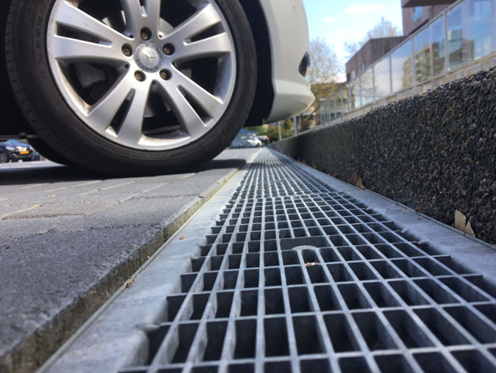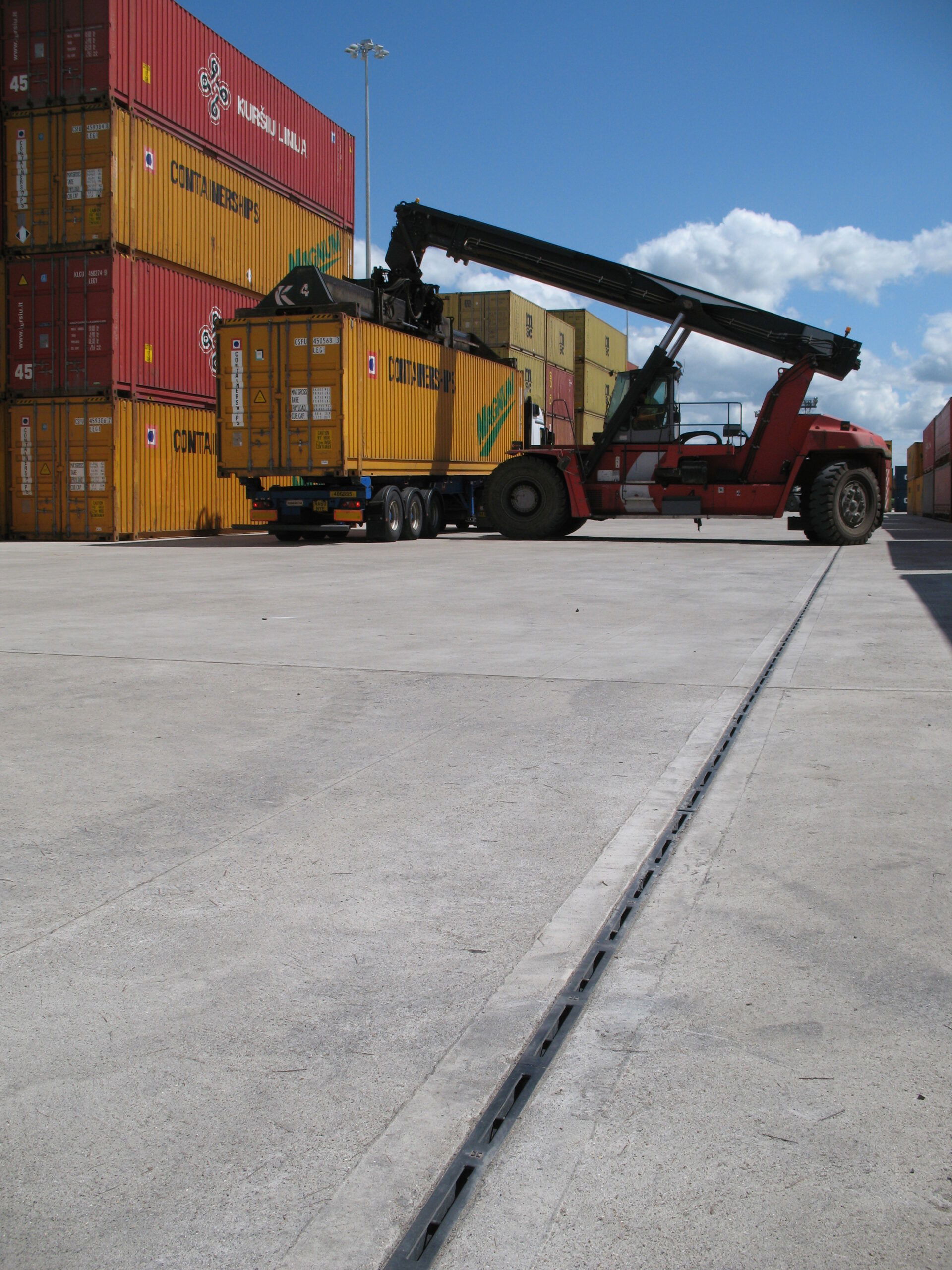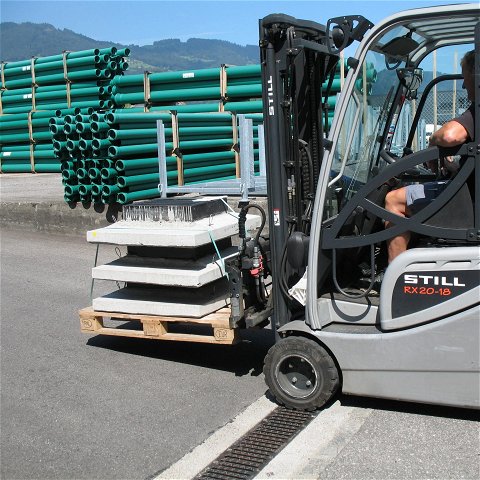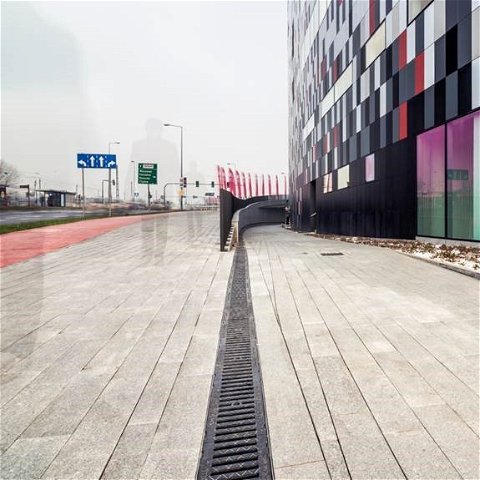Load classes A 15 – F 900
The European Standard EN 1433:2002 uses six load classifications between A15 – F900, with application areas as proposed below. The specified values refer to the test load in kilonewtons (kN).
Choosing the right drainage channel for your project

Selecting and specifying the correct linear drainage system for the project application under design should not be based solely on load rating. Other important factors should also be considered regarding the location and application area of the system. It can have an influence on how the channel will be treated when in situ. This includes:
-
Presence and level of dynamic forces
-
Intensity and speed of traffic
-
Traffic pattern (braking, turning, accelerating, crossing at tangents etc)
-
Location of structures (e.g. kerb-lines, building facades, landscape features etc)
-
Other factors that leave the channel protected or exposed at the surface
Load classes for heavy-duty traffic and airports
The load classes of the EN 1433 standard are sufficient for many installation situations. However, in the case of areas with high dynamic loads and/or heavy traffic, it is essential to consider the holistic installation situation on a project-specific basis. Since a wide variety of factors have to be taken into account here and other load models can also be used for the calculations, our experts are at your side as designated drainage specialists, especially in these cases.
If you require assistance to ensure you have the right drainage channel, please don’t hesitate to get in touch.
Load classes for ultra heavy-duty loads and dynamic forces

For areas that are subject to a high frequency of ultra heavy-duty vehicles exerting extremely high loads and dynamic forces, they need to be more carefully considered on a project-specific basis. There are several factors that need to be taken into account such as steel reinforcement and expansion joints at the installation stage.
Our technical support team are able to provide help and advice in these cases based on our knowledge and experience.

HAURATON drainage channels have been independently tested for load capacity and watertightness in accordance with the European Standard EN 1433: 2002.
EN 1433
ISO 14001:2015
CE Mark Approved

